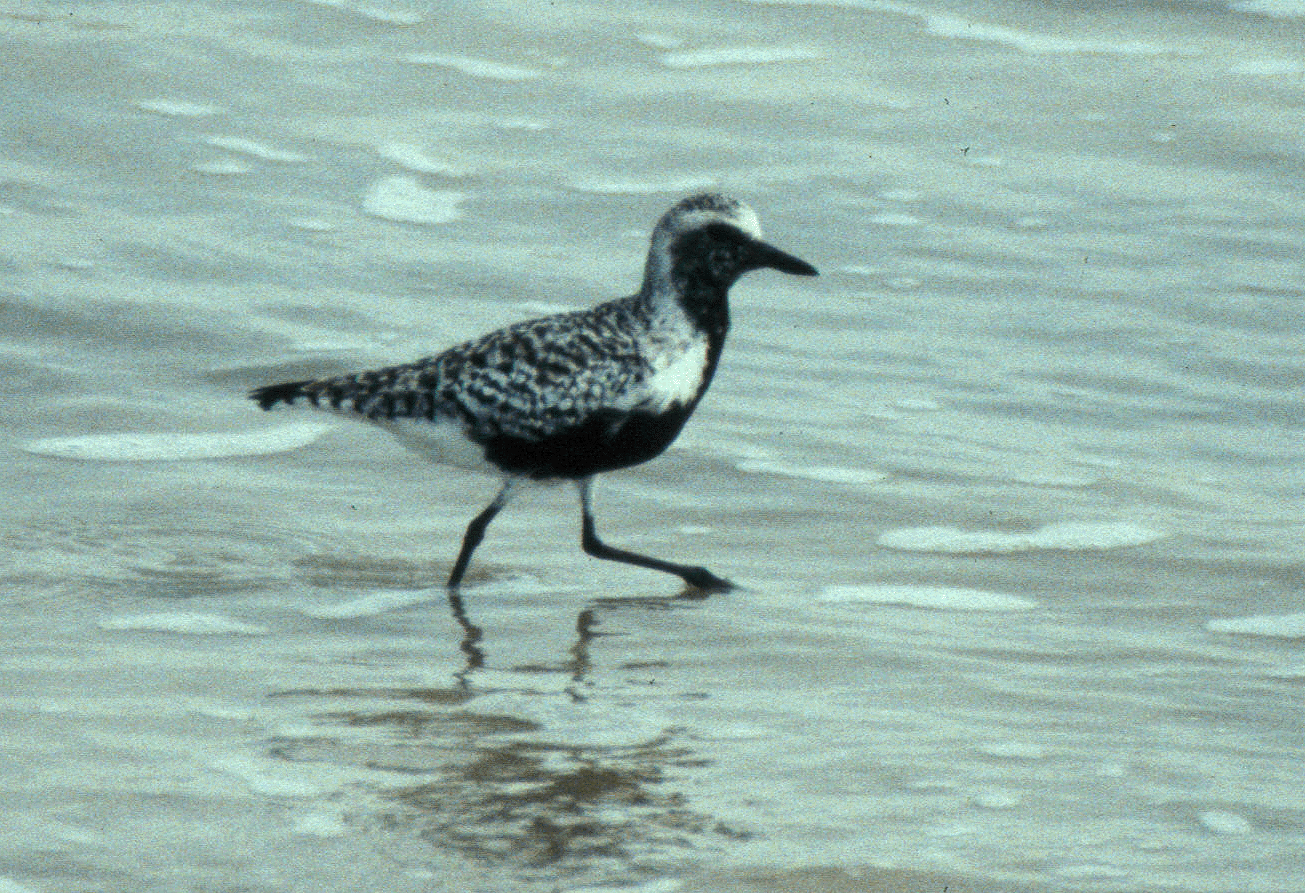

Earliest dates:
11 Apr 1998, Miner Co. (Kostecke
in Swanson 1999)
16 Apr 2010, Hughes Co. (Miller in Seasons
2010c)
22 Apr 2005, Harding Co. (Miller in Seasons
2005c)
Latest dates:
17 Jun 2006, Brown Co. (Olson
in Seasons 2006d)
18 Jun 1985, Day Co. (Springer in Seasons 1985d)
18 Jun 1987, Roberts Co. (Springer in Seasons
1987d)
Unusual concentration:
18 May 2012, Flight Lake, Potter Co., 371 (Unzen in Seasons 2012d)
Earliest dates:
07 Jul 2000, Brown Co. (Bardon in Seasons 2000d)
07 Jul 2010, Clay Co. (Swanson in Seasons 2010d)
09 Jul 2006, Beadle Co. (McWilliams in Seasons
2006d)
Latest dates:
08 Nov 1975, Bon Homme Co., 4
(Baker in Seasons 1976a)
12 Nov 2011, Grant Co. (Unzen in Seasons 2012a)
15 Nov 1998, Charles Mix Co. (Mabie in Seasons
1999a)
The dark axillaries and white rump of the Black-bellied Plover distinguish it, in all plumages, from the American Golden-Plover. Black-bellied Plovers are also slightly larger, and have heavier, longer bills. Nonbreeding birds are paler above than are nonbreeding American Golden-Plovers. Finally, Black-bellied Plovers usually occur in smaller flocks than do American Golden-Plovers. Photo: Jake Faust.